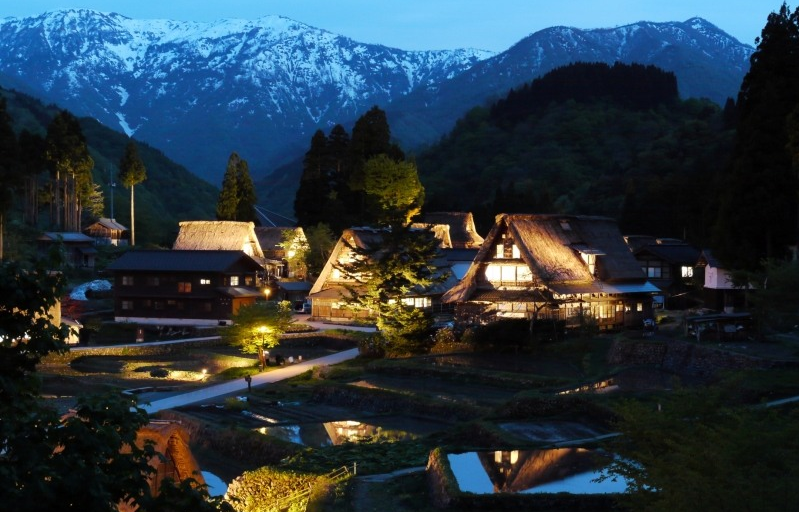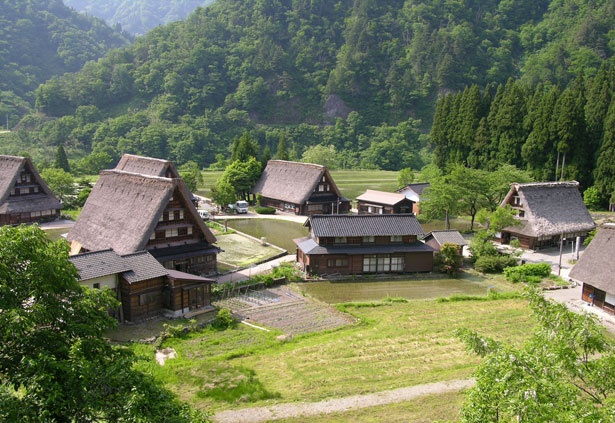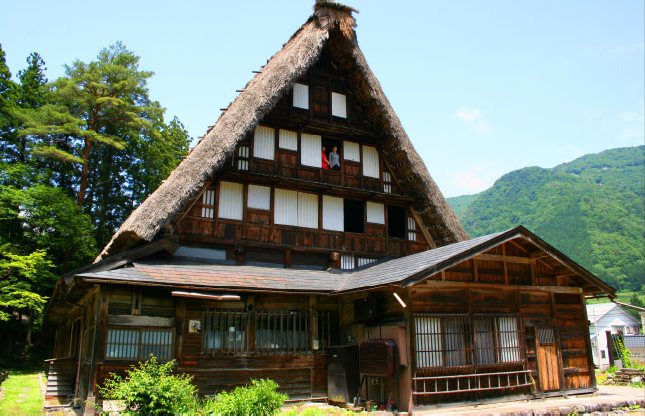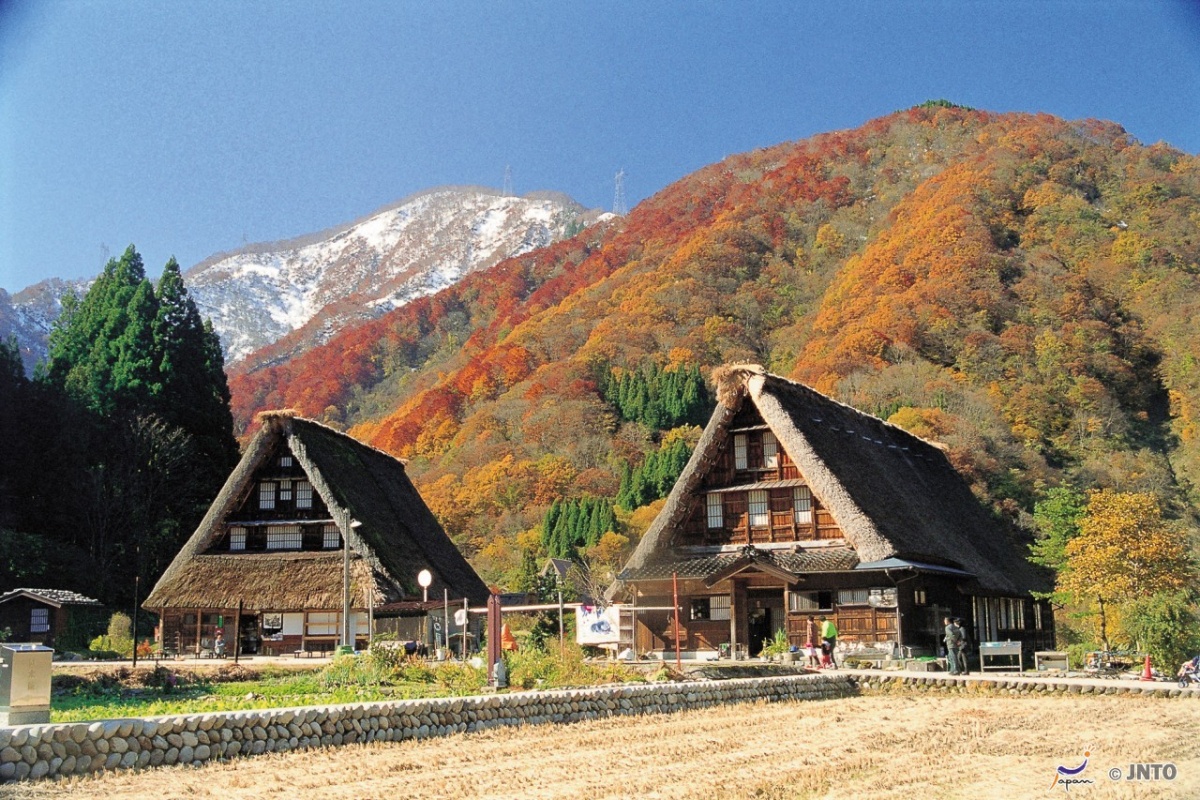Visit 3-Michelin-Starred Gokayama
The historic villages of Gokayama are located in mountainous snow belt of southwestern Toyama Prefecture near the borders with Gifu and Ishikawa. Recognized as a World Cultural Heritage Site and awarded three stars in the Michelin Green Guide Japan, while the villages are still off the beaten path, they are well worth visiting.
By Masayoshi Sakamoto (坂本正敬)Centuries-Old Architecture
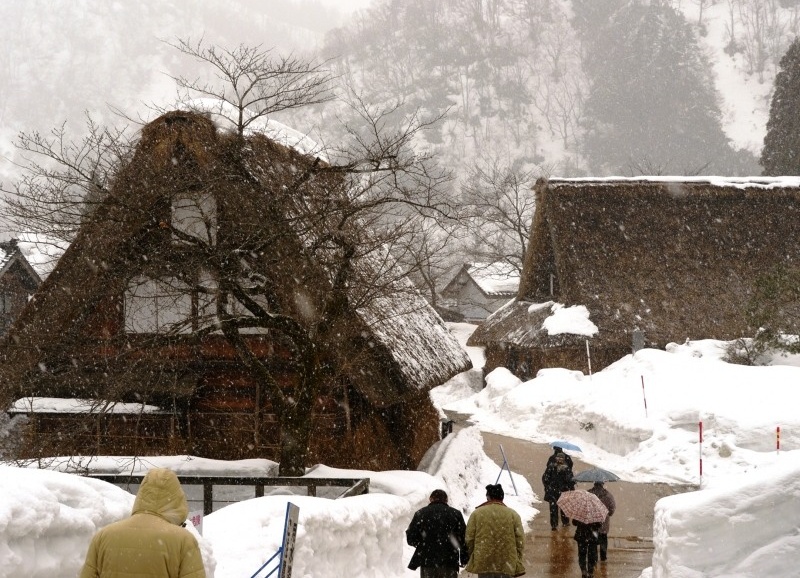
https://allabout.co.jp/gm/gc/452064/photo/1308771/
In the two small villages of Ainokura and Suganuma, thatched houses are crowded together, the oldest dating back over 400 years. The houses have hefty pillars and beams to withstand the heavy snowfall in the long winter, their characteristic steep roofs pitched at a nearly 60-degree angle. Their appearance is similar to a Buddhist worshipper putting his or her hands together in prayer, leading this architectural style to be called gassho-zukuri after the Japanese word gassho, which refers to the gesture of putting hands together in prayer.
Including the Iwase and Murakami homes, which have been designated as important cultural properties of Japan, the owners of the houses in Ainokura and Suganuma still live a traditional lifestyle. This is one reason these villages were registered as a World Cultural Heritage Site in 1995: “Shirakawa-go and Gokayama Gassho-zukuri Villages” was only the fourth such registration in Japan. Shirakawa-go is a neighboring village, while a further town of Hagi-machi lies beyond the Gifu prefectural border.
Even with their museums, events and souvenir shops, Ainokura and Suganuma still preserve their tranquil lifestyles and landscapes. Fleeing Heike samurai lived here following the 12th-century Genpei War, and descendants of Nancho samurai immigrated here as well. You can enjoy this rural lifestyle as though you'd been transported through time to the feudal age of the Edo Period. Visit the old-fashioned villages and feel the history!
Gokayama Tourist Information Center
Kaminashi 754, Nanto City, Toyama
Tel: 0763-66-2468
Access
To reach the area, take the Hokuriku Shinkansen to Shin-Takaoka Station, where you can either rent a car to drive to Gokayama or take the World Heritage Bus.
By Car
After renting a car at the Shin-Takaoka Station rotary, depart for Gokayama. The Tokai-Hokuriku Expressway is strongly recommended, but you can also take Route 156. The best route on the expressway is Takaoka Exit – Oyabe Tonami Junction – Gokayama Exit.
The Tokai-Hokuriku Expressway, from the Takaoka exit to the Gokayama exit, takes about 30 minutes. The drive from the Gokayama exit to Gokayama Gassho-zukuri Village takes about 20 minutes. If you visit Toyama by plane, rent a car in front of the airport and drive to Gokayama as follows: Toyama Exit – Oyabe Tonami Junction – Gokayama Exit.
World Heritage Bus
The World Heritage Bus runs five times a day from the No. 4 bus stop at the station rotary. No reservations are necessary. The bus departs Shin-Takaoka Station at 8:25, 9:45, 11:15, 13:15 and 16:15 and arrives in Ainokura in about one hour.
One-way fare to Ainokura is ¥1,000 for one adult, though a number of ticket options are available, with slightly confusing names in English. The Takaoka to Shirakawa-go One-Way & 2-Day Pass to both Gokayama and Shirakawa-go is ¥2,000, allowing you to get on and off the bus as often as you like between Johana and Shirakawa-go. The Gokayama 2-Day Pass is actually a round-trip pass that lets you go to Sasarakan (but not Shirakawa-go) for ¥2,500, getting on and off the bus freely between Johana and Sasarakan. And you can get the full package including both the Gokayama and Shirakawa-go for ¥3,500 yen with the with the Gokayama & Shirakawa-go 2-Day Pass.
When getting on the bus from Shin-Takaoka Station, just ask the driver for a ticket.
Seasonal Visits
The scenery in the area is particularly overwhelming when the leaves change colors in autumn, and the villages buried in the heavy snow are breathtaking.
These tranquil villages await you in all seasons, but they are still home to the people living there. Please respect their private property by staying in public areas, and refrain from visiting in the early morning and at night.
Read more in Japanese from All About Korobe-Tateyama guide Masayoshi Sakamoto.


